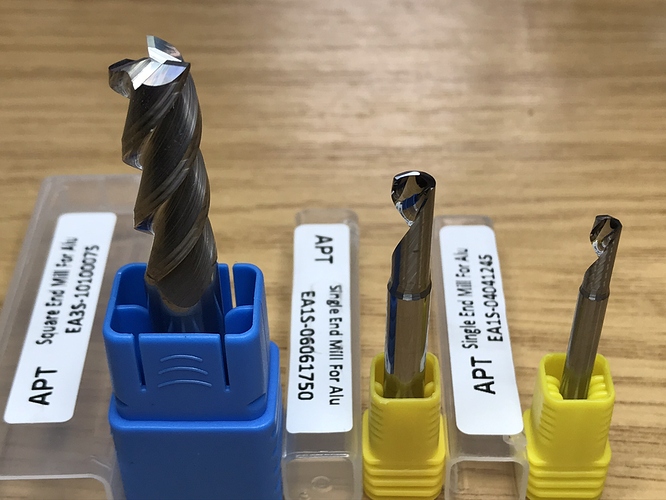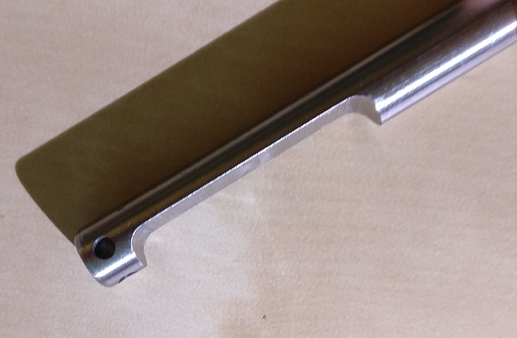Edit: Not my video, but knew there be interest as the topic has been discussed 
This is fascinating…thanks for sharing.
And increasing WOC to stabilize a chattery cut, that’s the kind of counter-intuitive things that I like about
CNC
Indeed, interesting video.
On the counter-intuitive, I’m still re-reading some of the answers from folk like @spargeltarzan in threads like this one;
I also grabbed a copy of millalyzer so I could get my own charts of cutter forces to try to figure out what’s going on when I’m cutting, there is much to learn…
His video on aluminium chatter analysis does a nice quick into to spectral analysis too.
I should probably put a disclaimer, its not my video but knew it be of interest here 
I too am a huge fan of Millalyzer. I can’t remember, are you on a Nomad or a Shapeoko?
For the Nomad, I’ve been having trouble getting it dialed in. Oddly, the Nomad is able to make chatter-free cuts that Millalyzer says it shouldn’t, as well as unable to make cuts that Millalyzer says should be fine.
I’ve been PMing with @spargeltarzan and he’s thinking about it though. I want to do some more testing myself but I’m waiting for my long air compressor acquisition ordeal to come to an end so that I can cut with at the very least proper chip evacuation, if not MQL. I want to see what I can do with my sexy Japanese 6mm 4-flute DLC endmills…
On a side note, [EDITED OUT] UPS. They managed to get literally everything about delivering my compressor wrong. They lied about trying to pick it up twice, delayed it during a “security” check and then managed to deliver it severely damaged, without the wooden pallet it was attached to.
/rant
I’m using a Shapeoko with a VFD spindle so I’ve got quite a different set of parameters for the machine.
I’ve been thinking of running through and trying to identify the primary resonance modes of the machine, I was thinking of using one of the “precision balanced” collets I got from eBay which are sufficiently wobbly to act as an effective vibration source on the spindle at different RPM.
So far I’ve mostly been using the charts to educate myself on the expected cutting forces of different cuts and cutters, now I’m grabbing some different geometry cutters to try things out;
I’m also admitting that I probably need to buy a compressor and start blowing the chips out of pockets…
Really nice stuff, thanks @DanStory for posting!
Chatter frequency is somewhere between 230 - 270 Hz, pretty low actually. Given that the machine bed looks a lot like 20 mm aluminium profiles, it might just be the vise with workpiece being excited to vertical oscillation. Also, it takes quite some distance to develop a significant amplitude. I wonder whether he would have noticed this in an adaptive toolpath where the feed is changing long before the oscillation could have grown very much. Very interesting…
Yes, please!
If you need a well-defined imbalance for your vibration test, (instead of that collet nut you were considering) I can send you one of these:
I’ll not accept liability for spindle damage though…
Wouldn’t endmill rake angle and edge radius be a driving factor? I wonder if there’s a way to measure them, since few manufacturers publish even rake angles.
Well, yes, the tool details do matter, but in the case of the Nomad, the simple structural model exposed in millalyzer’s user interface is probably simply not good enough at the moment.
Important angles and (in particular) edge radius are routinely measured optically. That’s what companies like Alicona live off, mostly. When you order a few thousand 100€-tools every month you’d like to know exactly how long you can use them before re-grinding is really necessary. Those instruments are not cheap, unfortunately.
For the rake angle, would it be good enough to measure it with a cheap Chinese microscope like this? By “measure”, I mean look at the end of the endmill from above/the side and use an on-screen protractor to check the angle.
Not sure if it has the resolution to measure the radius though.
And does anyone know of any companies that publish rake angle?
Sumitomo is quite happy to tell me about how important the rake angle and edge geometry is in their documentation and they’re also happy to tell me about what all the different symbols are but nowhere do they actually describe the geometry or use the symbols.
Union Tool vaguely describes the edge geometry (e.g. “Flatland design helps control chipping and chattering”) but doesn’t go into any more detail.
And in Europe, Gühring and DIXI Polytool also failed.
The only companies I found that do publish it are Mitsubishi, which appears to show it with a little badge, and Sandvik, which has a crazy number of specs.
I even asked @Julien’s helpful supplier who sells his own brand of endmills and is quite responsive and he told me that even for people like him, who buys and resells a ton of endmills, it’s hard even to get feeds and speeds out of the endmill grinding folks, let alone geometry.
SECO, Dormer-Pramet, Ceratizit Group (WNT, KOMET, Klenk etc), Sandvik, all publish rake angles.
removed because it should be a pm and doesn’t add to the topic
What sort of sensor do you think would record well across this frequency range?
I could do a very rough job by listening / watching but that’s not a very nice way to collect “data”
Here’s one of the YouTube comments about that:
"Jesse Schoch
Cool! have you tried to use a MPU6050 or piezo (used like a contact mic) to get better feedback on the vibration. I’ve often wondered if anyone has tried to close the loop with feed overrides and vibration feedback on a hobby machine.
REPLY
Hide reply
After the audio chatter analysis video, I picked up four LIS3DH 3-axis accelerometers, a handful of electret mics and MAX4466 amps, and like a dozen disc piezo buzzers, all with the intention of instrumenting the heck out of the machine to see what’s going on. Afraid I got distracted and never dug into that project… but I have all the gear and should probably spend some time working on it! I bet it’d be very interesting."
It’s unfortunate that Audacity only supports two audio channels because it’s pretty handy for analog recording and analysis. DAWs and their interfaces can support as many analog channels as you’d care to record, but don’t provide much in the way of analysis.
Then there’s the sensors with digital outputs. Custom acquisition and analysis hardware/software?
2020-10-23 Correction; Apparently it’s only Windows that limits Audacity to 2 channels. Also sampled data can be exported as .txt for analysis.
I’ve used the TDK ICM-20649 before. It has reasonably good signal quality and goes up to 30g. There are affordable break-out boards available, and it’s not too difficult to talk to (SPI or I2C).
That’s a nice looking sensor, looks like you can poll it at 4.5kHz for accellerometer data if I’m reading that right.
That’s correct, at least over SPI. I’ve seen signals just below 1 kHz resolved reasonably well with this one. For higher signal frequencies, something like the Kionix KX-222 (or successor, forgot the name) are better, but those have much higher noise levels - unsurprising at $10 per chip. IEPE piezo sensors have far better signal quality, but no DC response, and the cost of the signal acquisition chain is beyond the pale.

